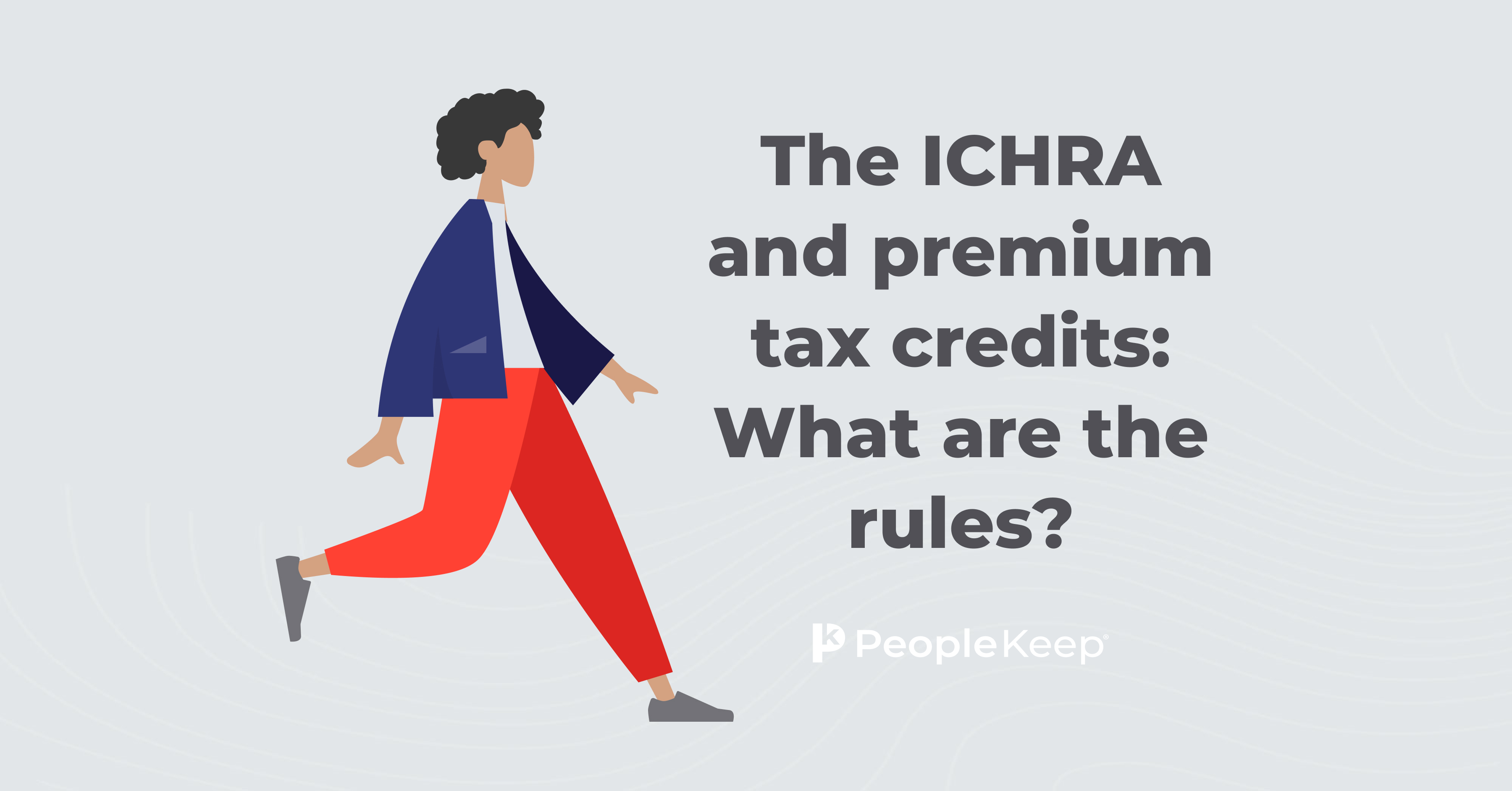Understanding pre vs. post-tax benefits
By Elizabeth Walker on July 22, 2025 at 2:00 PM
Offering employee benefits is an effective tool for recruiting and retaining talent for many organizations. When building a benefits package, it's important to understand which benefits can be paid for through pre-tax contributions and which are covered by post-tax deductions.
Both pre-tax and post-tax benefits have their pros and cons. Generally, pre-tax deductions provide an immediate tax break but impact an employee's taxable income. Meanwhile, post-tax deductions don't provide immediate tax relief but aren't taxed when benefits are used in the future.
In this article, we'll define pre-tax and post-tax benefits so that you can determine the best benefits for your employees and optimize your tax savings.
In this blog post, you'll learn:
- How pre-tax and post-tax benefits compare.
- Examples of pre-tax benefits.
- Examples of post-tax benefits.
What are pre-tax benefits?
With pre-tax benefits, employers deduct the value of the benefit from an employee's gross pay before federal income and employment taxes are applied. By withholding paycheck deductions before you withhold taxes, you lower an employee's total taxable income, reducing the amount of federal income tax the employee has to pay.
A pre-tax deduction lowers tax liabilities for employers and employees. However, the employee might owe taxes in the future when they use the benefit that the deduction was applied toward. For example, an employee who retires will owe taxes when they withdraw money from a pre-tax 401(k) plan.
Not all pre-tax benefits are exempt from all federal tax withholdings. For instance, adoption assistance is exempt from federal income taxes, but it isn't exempt from FICA taxes like Social Security, Medicare tax, or FUTA tax.
Additionally, pre-tax benefits may not be exempt from all state and local taxes, so employers should check their state and local laws to determine which benefits are exempt.
Common examples of pre-tax benefits
Pre-tax benefits come in various forms, so it can take time to determine which ones you should offer to your employees. To simplify things, we've compiled the following list of benefits that are typically covered through pre-tax deductions.
Health insurance plans
Health plans are a popular pre-tax benefit. An employer-sponsored health plan is health coverage that an employer purchases for their employees and their dependents. Usually, with a fully-insured group plan, the employer splits the cost of premiums with their employees on a pre-tax basis.
Common types of pre-tax employer-sponsored health plans include:
- Group health insurance plans
- Dental insurance plans
- Vision insurance plans
Another health benefit that uses pre-tax funds is a health reimbursement arrangement (HRA). HRAs are employer-funded health reimbursement plans that help both employees and employers save on healthcare costs.
The employer contributes tax-free dollars for employees to pay for out-of-pocket medical expenses and sometimes individual health insurance premiums. Employers are exempt from payroll taxes on the contributed amount, and employee reimbursements are income tax-free as long as their health insurance policy meets the HRA’s eligibility requirements.
For example, a qualified small employer HRA (QSEHRA) requires employees to have minimum essential coverage (MEC). An individual coverage HRA (ICHRA) requires employees to have a qualified individual health plan. If any employee doesn’t meet these requirements, they can’t participate in the HRA.
Health savings accounts (HSAs)
A health savings account (HSA) is also in the pre-tax group. This tax-advantaged employer- and employee-funded account lets employees set aside pre-tax money to pay for healthcare items. However, to contribute to an HSA, the employee needs an HSA-qualified high deductible health plan.
Employee contributions deposited directly from their paycheck are from pre-tax dollars, reducing their gross income. Withdrawals to pay for qualified medical purchases are also tax-free.
Unlike a flexible spending account (FSA), employees keep their HSA account and funds even if they quit their job or become unemployed. Money in the account rolls over yearly, and any investment growth is tax-free.
Pre-tax retirement plans
Traditional IRA plans, 403(b) plans, a Thrift Savings Plan, and many 401(k) plans are pre-tax. Every dollar deposited into an eligible retirement account reduces an employee's taxable income by an equal amount.
However, employees are subject to annual contribution limits and, depending on the plan, may have to pay taxes when they withdraw funds. Also, while these retirement saving plans are income-tax-free, they're still subject to Federal Insurance Contributions Act (FICA) taxes and Social Security taxes. According to the IRS, pre-tax and Roth employee elective salary deferrals are subject to FICA and Medicare taxes, but employer matching and non-elective contributions aren’t.
Commuter benefits
A pre-tax commuter benefit lets employees deduct their monthly work-related commute costs. Employers can deduct transportation costs directly from their employees' paychecks on a pre-tax basis for expenses like parking garage fees and transit passes.
Commuter benefits support employees by increasing their overall take-home pay and providing them with various alternative commuting options, reducing their overall transportation expenses.
What are post-tax benefits?
Post-tax benefit contributions, sometimes called after-tax deductions, are taken from an employee's paycheck after taxes have already been deducted. Since post-tax deductions reduce net pay rather than gross pay, they don't lower the individual's overall tax burden.
Benefits that are deducted on a post-tax basis result in the employer and employee paying more income, payroll, and employment taxes. But the employee typically won't owe any income tax on the benefits when they use them in the future.
For example, an employee who retires will not owe additional taxes when they withdraw money from a post-tax retirement plan. This can make a post-tax deduction preferable for employees compared to pre-tax deductions.
Because you withhold taxes before withholding benefit contributions, all federal, state, and local taxes are already paid on the contributions.
Common examples of post-tax benefits
Now that you know how post-tax benefits work, how do you know which ones to choose? When considering what post-tax benefits you want to offer at your organization, an excellent place to start is with popular options.
Below, we'll go into detail on common post-tax benefits that employers offer to their employees.
Stipends
A stipend is a fixed sum of money offered to an employee in addition to their regular wages. Sometimes called an allowance or fringe benefit, a stipend is usually provided on a regular basis as determined by the employer. However, stipends can also be offered as a one-time allowance or spot bonus.
Stipends allow employees to pay for various out-of-pocket expenses, such as wellness opportunities, professional development costs, fertility benefits, and remote office equipment.
The IRS considers stipends a form of taxable income. Therefore, employers must pay payroll taxes on stipend reimbursements totaling a tax rate of 7.65% (6.2% for Social Security and 1.45% for Medicare).
Employees are taxed between 20% to 40% on the total amount they receive as income at the end of the year.
Post-tax retirement plans
While some retirement plans are pre-tax, that's not the only option. A retirement contribution paid by employees into an account after income taxes are deducted from their paycheck is called a post-tax retirement contribution.
The two types of post-tax retirement accounts are Roth IRAs and 401(k) plans. Roth contributions use post-tax money. Earnings held in the account for five or more years grow tax-free, and withdrawals are also tax-free. Roth IRAs are preferable for many individuals compared to traditional IRAs, which require taxes upon withdrawal.
Certain 401(k) accounts are structured similarly. Once an employer deducts payroll taxes from an employee's wages, the employee can make additional 401(k) contributions.
After-tax 401(k) contributions empower employees to invest more money into their retirement fund and provide them with tax-deferred growth until withdrawals begin.
Disability insurance
Employees who purchase disability insurance through their company's group medical plan can choose to pay for its premium with pre-tax or after-tax dollars. Employees make their deduction choice upon signing up for the benefit.
The two types of disability insurance an employee can have are:
- Short-term disability insurance: This type of insurance usually covers employees' wages from three months to a year.
- Long-term disability insurance: This type of insurance provides coverage for at least 90 days and, depending on the disability, can provide income replacement up to age 65. Long-term disability insurance premiums rise the longer they've been in place.
Life insurance
Life insurance premiums are tax-deductible as a business-related expense, typically called a life insurance post-tax deduction. The most common type of post-tax life insurance deduction is group-term life insurance.
Group-term life insurance coverage is a contract issued to employees that employers offer as an employee benefit.
The Internal Revenue Service (IRS) has specific rules for life insurance. Under IRS regulations, employer-provided group term life insurance is tax-free if the policy's death benefit is less than $50,000. Coverage over $50,000 must be paid post-tax.
Garnishments
Wage garnishment occurs when the court orders a business owner to deduct an employee's earnings due to a debt. Garnished wages are a post-tax deduction regardless of the reason.
Examples of wage garnishment include:
- Default student loans
- Child support payments
- Prior medical debt
- Court-ordered fines or restitution
If an employee has pre-tax deductions in place, wage garnishments are taken out of their paycheck based on their total income before they make any adjustments. Exceptions to this are local, state, and federal taxes, other wage garnishments, and other mandatory deductions.
Employers must send the payment to the appropriate legislative authority or credit institution until the employee's debt is cleared.
Frequently asked questions
What are pre-tax benefits?
Pre-tax benefits are perks deducted from gross pay before taxes, reducing taxable income and lowering tax liability. Examples include health insurance plans, HSAs, and certain retirement plans.
What are post-tax benefits?
Post-tax benefits are deductions made from an employee's paycheck after all taxes have been deducted. Examples include stipends, disability insurance, and life insurance.
What's the difference between pre- and post-tax retirement benefits?
Traditional IRA plans, 403(b) plans, a Thrift Savings Plan, and many 401(k) plans are pre-tax retirement accounts. Roth IRAs and Roth 401(k)s are post-tax.
Conclusion
Understanding the difference between pre- and post-tax benefits is crucial to building a suitable benefits package. Pre-tax contributions can reduce your overall tax burden now, but post-tax benefits can result in tax savings in the future.
By working with a tax advisor and staying up to date on pre- and post-tax benefits, common deductions, and your state and local taxation laws, you'll save time and future headaches.
This article was originally published on August 20, 2015. It was last updated on July 22, 2025.
Check out more resources
See these related articles

What is pet insurance, and how can I offer it?
This blog takes you through the ins and outs of pet insurance, how it works, what it does and doesn’t cover, and how you can offer it to your employees.

Health insurance stipends pros and cons
In this article, we’ll discuss the pros and cons of health insurance stipends, best practices, and a tax-free way to offer your employees’ insurance.

The ICHRA and premium tax credits: what are the rules?
With an ICHRA, the allowance amount you offer your employees can impact their premium tax credit eligibility.



